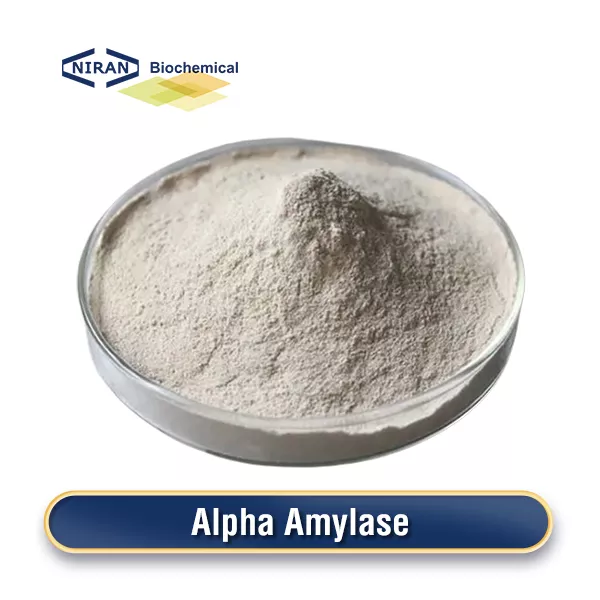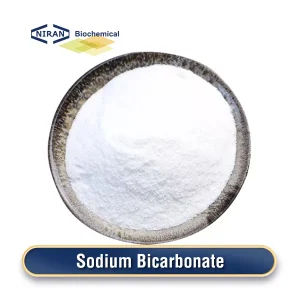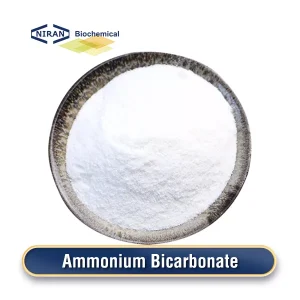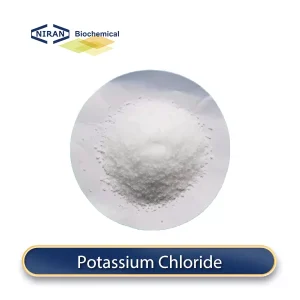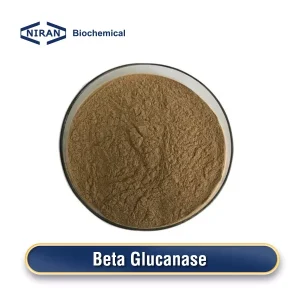What is α-Amylase?
α-Amylase is an enzyme food additive, usually in the form of gray powder or liquid. Its main chemical property is that it can hydrolyze the α-1,4-glycosidic bonds in starch molecules, decompose starch into shorter chain segments, enhance the solubility of food and reduce viscosity.
It is mainly used in food processing and wine production, and can improve the texture and taste of products such as bread and wine. Food-grade α-amylase is safe and reliable, meets food safety standards, and is an indispensable and important functional additive in the food industry.
- Microbial fermentation method: This is the most common and mainstream preparation method. Select suitable microbial strains to produce and secrete α-amylase through the fermentation process. During the fermentation process, it is necessary to control the composition, pH, temperature and oxygen supply of the culture medium to increase the yield and activity of the enzyme.
- Immobilized enzyme method: In the immobilized enzyme method, α-amylase is usually fixed on a carrier, such as fixing the enzyme on a resin, gel or other supporting material. This method can increase the stability and reusability of the enzyme and is suitable for industrial-scale production.
- Genetic engineering technology: Using genetic engineering technology, the α-amylase gene is introduced into efficient microorganisms, and the enzyme production and activity are increased by modifying and regulating the gene expression of the enzyme. This method can accurately regulate the characteristics of the enzyme and improve production efficiency and economy.
- Chemical synthesis: Although relatively rarely used, chemical synthesis can also be used to prepare certain types of α-amylase. This method is usually carried out in the laboratory and involves complex organic synthesis and reaction conditions.
Recommended dosage:
| Food name | Maximum usage(g/kg) |
| Bread and dough | 0.5 – 2 g/kg |
| Biscuits | 0.5 – 1.5 g/kg |
| Bakery mixes | 0.5 – 2 g/kg |
| Puff pastry and bread dough | 1 – 3 g/kg |
| Cheese and dairy products | 0.1 – 0.3 g/kg |
| Alcoholic beverages | 0.01 – 0.1 g/kg |
| Jams and jellies | 0.1 – 0.5 g/kg |
| Fruit and vegetable juices | 0.05 – 0.2 g/kg |
| Confectionery and chocolate | 0.2 – 1 g/kg |
| Condiments and seasonings | 0.1 – 0.5 g/kg |
| Canned foods | 0.2 – 1 g/kg |
| Meat products and sausages | 0.1 – 0.5 g/kg |
| Salad dressings and sauces | 0.1 – 0.5 g/kg |
| Plant protein products | 0.2 – 1 g/kg |
| Cakes and desserts | 0.5 – 2 g/kg |
Food grade α-Amylase has a wide range of uses
- Starch hydrolysis: α-amylase can hydrolyze starch molecules and break them down into shorter starch chains, maltodextrin and glucose, etc., thereby increasing the solubility and absorbability of food.
- Improve the properties of dough and bread: In baked foods such as bread and dough, α-amylase can reduce the stickiness of the dough, improve the ductility and softness of gluten, and make the bread softer and taste better.
- Increase the flavor and taste of food: During food processing, α-amylase helps release the sweetness of starch and improve the taste and flavor of food.
- Extend the life of the product: In some foods, α-amylase can reduce the gelatinization degree of starch, reduce the aging and deterioration of food during storage, and thus extend the shelf life of the product.
- Improve the processing efficiency of food: α-amylase can accelerate the degradation reaction of starch during food processing, improve processing efficiency and production speed.
User asked question:
Q: What is the difference or connection between α-amylase and β-amylase?
A: α-amylase and β-amylase are two different types of starch hydrolases. α-amylase mainly acts on the α-1,4-glycosidic bonds inside starch molecules, breaking down starch into shorter chains and glucose, and is widely used in the food industry to improve food texture and taste.
β-amylase specifically acts on the α-1,4-glycosidic bonds at the non-reducing ends of starch molecules, breaking them down into maltose and a small amount of glucose, and is mainly used in specific industrial processes such as beer brewing.
The two differ in structure, function and application areas, but usually act together on starch molecules to promote the hydrolysis and utilization of starch.
Q: How is the domestic market environment for food-grade α-amylase so far?
A: China’s food-grade α-amylase market is expected to maintain a good development trend, mainly benefiting from the trend of healthy diet and the expansion of industrial applications. Demand continues to grow, while the supply chain is stable, and companies are also increasing production capacity to meet market demand.
Costs of raw materials and competition in the market might cause price fluctuations, although general trends are very steady. As opportunities in the global market increase, domestic companies are expected to expand their business through exports, but they also need to face competitive pressure from international brands.

